New Pluto photos reveal 'majestic' icy mountains, glaciers and sweeping plains
Nasa's New Horizons mission has captured the more detailed ever images of the dwarf planet
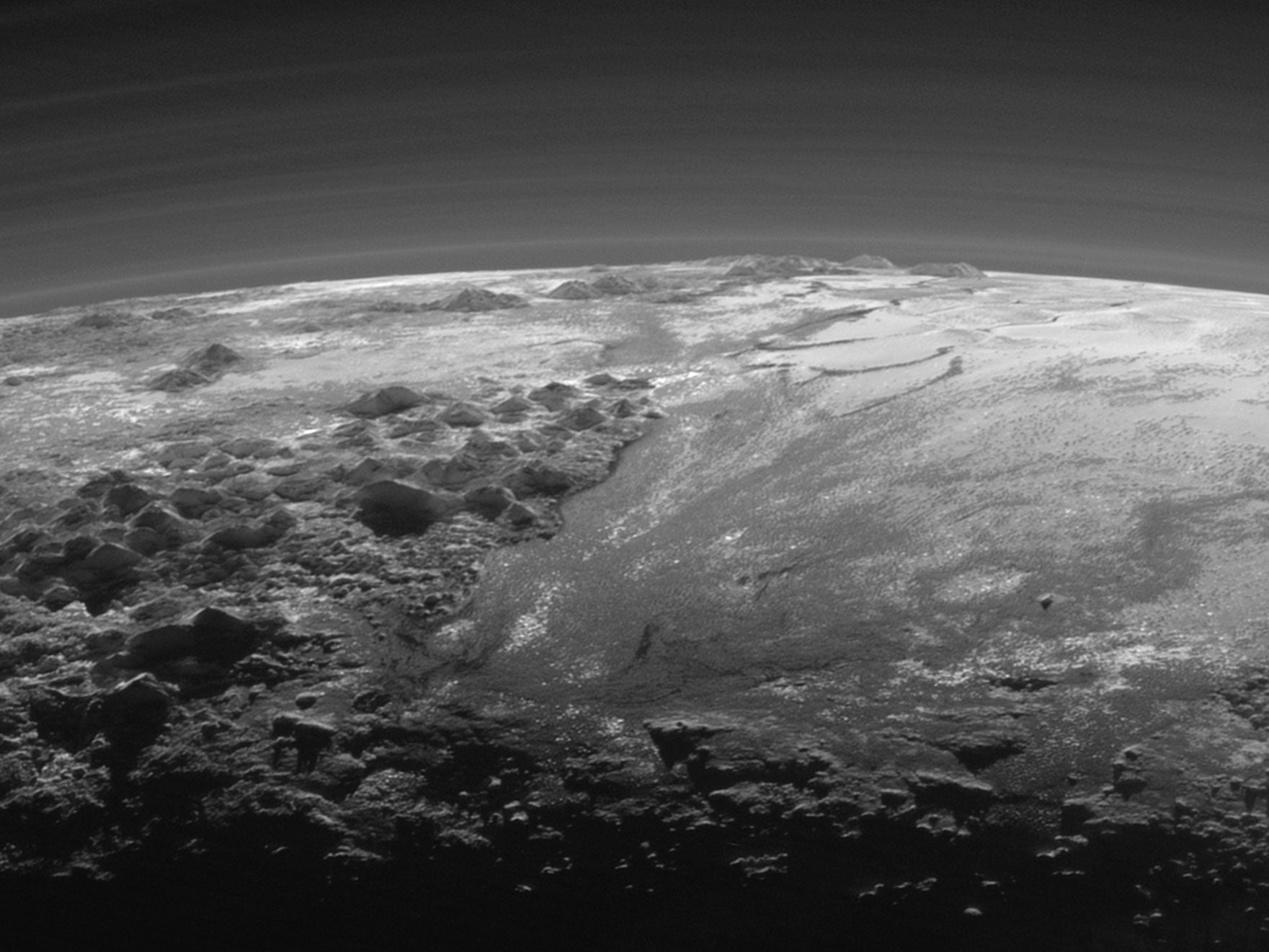
Your support helps us to tell the story
From reproductive rights to climate change to Big Tech, The Independent is on the ground when the story is developing. Whether it's investigating the financials of Elon Musk's pro-Trump PAC or producing our latest documentary, 'The A Word', which shines a light on the American women fighting for reproductive rights, we know how important it is to parse out the facts from the messaging.
At such a critical moment in US history, we need reporters on the ground. Your donation allows us to keep sending journalists to speak to both sides of the story.
The Independent is trusted by Americans across the entire political spectrum. And unlike many other quality news outlets, we choose not to lock Americans out of our reporting and analysis with paywalls. We believe quality journalism should be available to everyone, paid for by those who can afford it.
Your support makes all the difference.Spectacular new photos of Pluto have revealed “majestic” icy mountains, sweeping plains and a low-lying haze over the distant dwarf planet.
Nasa scientists said the latest images captured by the New Horizons spacecraft showed it to be “surprisingly Earth-like”, with evidence of a process similar to the water cycle.
A view caught of Pluto at sunset on 14 July showed the rugged terrain in sharp relief, with mountains believed to be up to 11,000ft high, flanked by huge plains and glaciers.
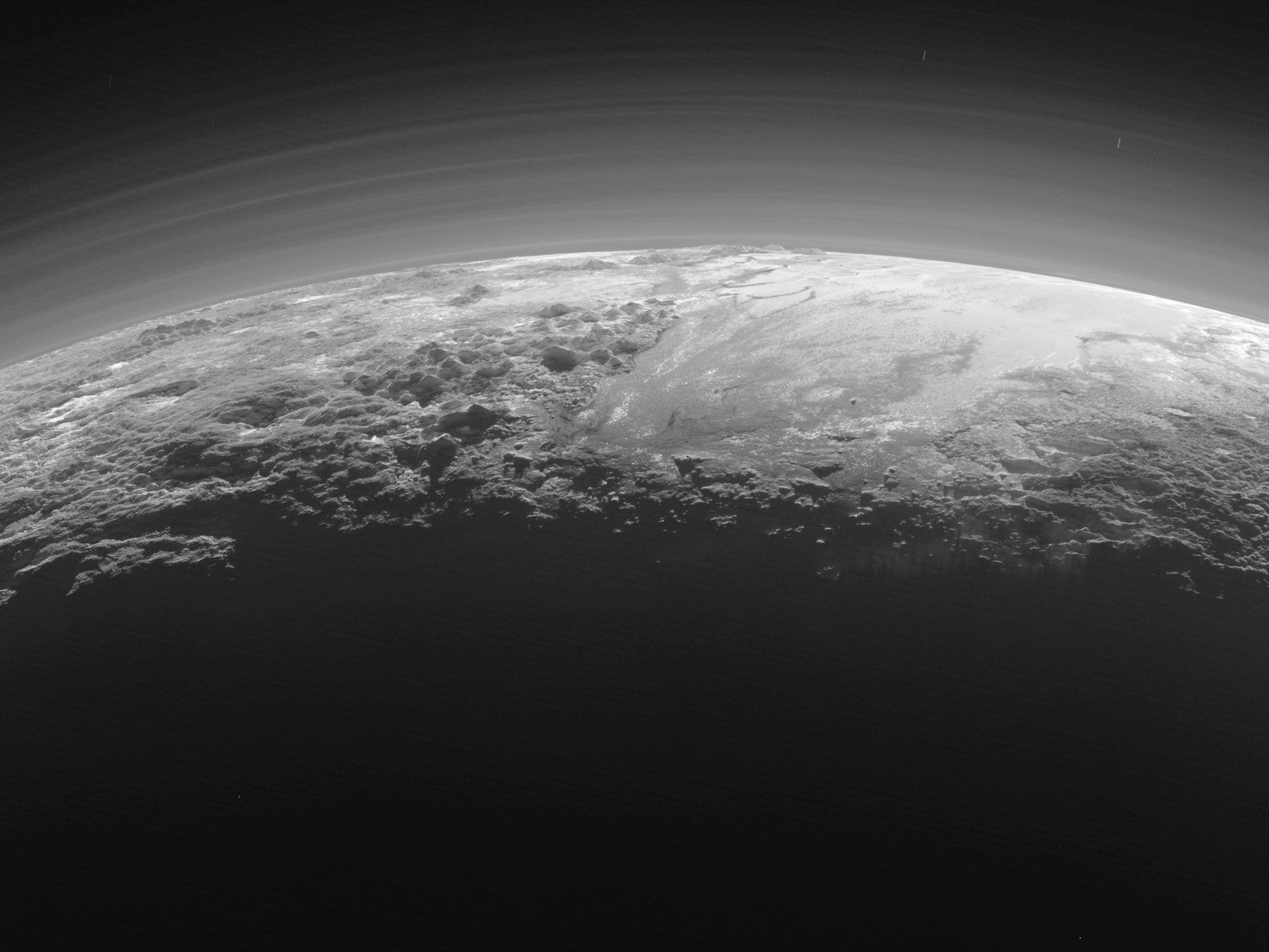
They have been named Norgay Montes and Hillary Montes, after mountaineers Sir Edmund Hillary and Tenzing Norgay, who were the first climbers to reach the summit of Mount Everest.
“This image really makes you feel you are there, at Pluto, surveying the landscape for yourself,” said New Horizons Principal Investigator Dr Alan Stern, of the Southwest Research Institute in Colorado.
“But this image is also a scientific bonanza, revealing new details about Pluto’s atmosphere, mountains, glaciers and plains.”
The dramatic backlighting and high resolution captured by the Ralph/Multispectral Visual Imaging Camera, which photographed the dwarf planet from 11,000 miles away, also reveals new details of hazes throughout Pluto’s “tenuous but extended” nitrogen atmosphere.
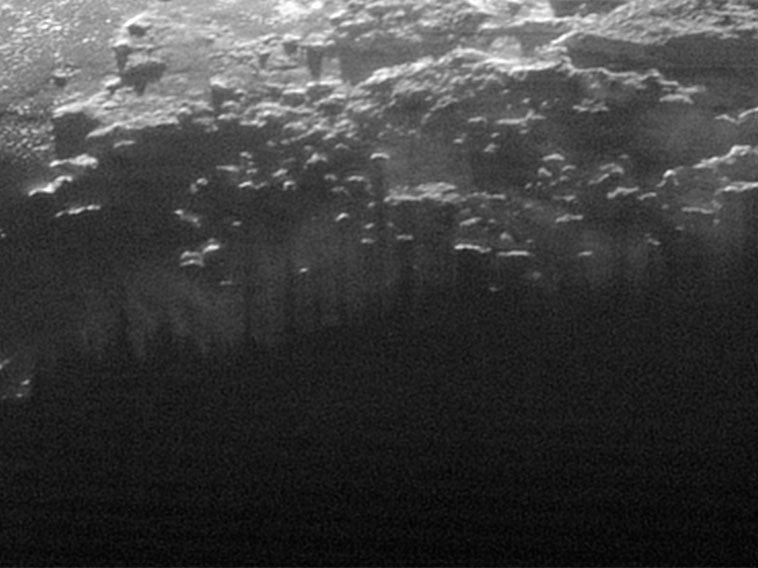
More than a dozen wispy layers can be seen stretching from near the ground to at least 60 miles above the surface.
Will Grundy, lead of the New Horizons composition team from the Lowell Observatory in Arizona, said that combined with other recent images, the picture provides evidence of a hydrological cycle on Pluto – but involving soft and “exotic” ices, including nitrogen, rather than water.
“In addition to being visually stunning, these low-lying hazes hint at the weather changing from day to day on Pluto, just like it does here on Earth,” Mr Grundy said.
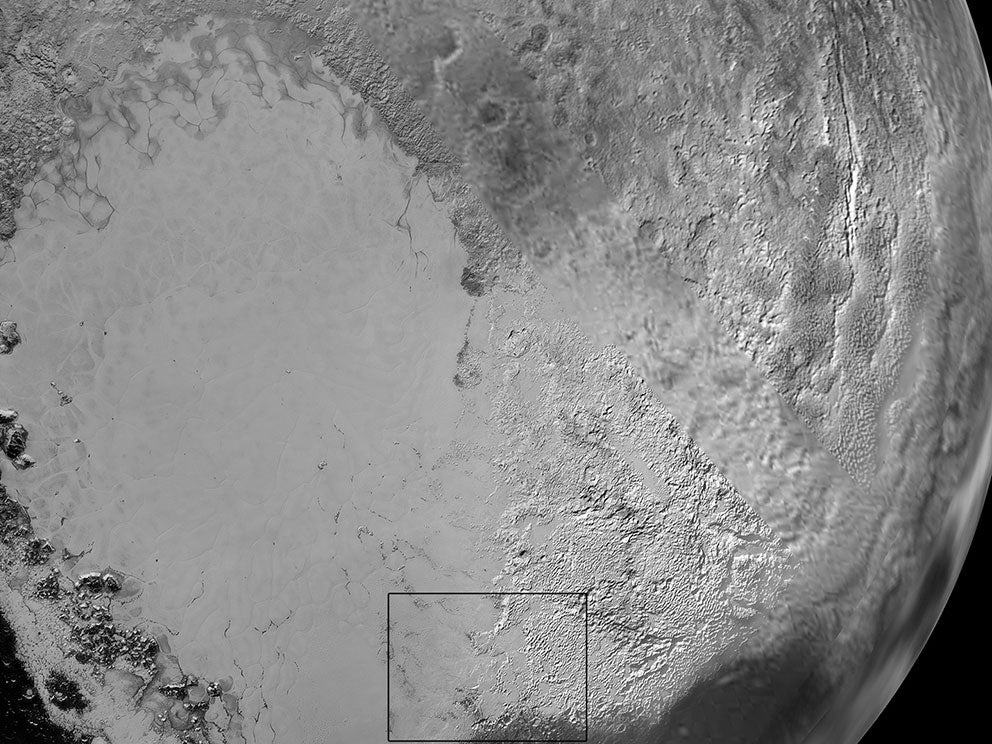
Bright areas seen east of the vast icy plain, informally known as Sputnik Planum, appear to be blanketed with ice, which Nasa believes may have evaporated from the surface and been redeposited.
A panorama also showed glaciers flowing back into the plain from the icy region, similar to the flows seen on the edges of Earth’s polar ice caps in Greenland and Antarctica.
“We did not expect to find hints of a nitrogen-based glacial cycle on Pluto operating in the frigid conditions of the outer solar system,” said Alan Howard, a member of the mission’s Geology, Geophysics and Imaging team from the University of Virginia.
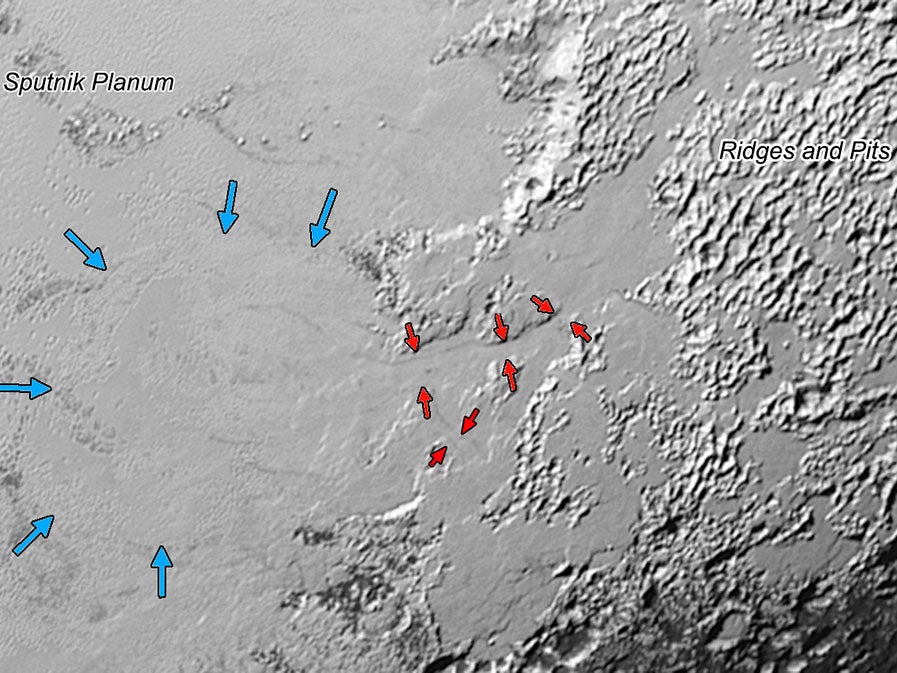
“Driven by dim sunlight, this would be directly comparable to the hydrological cycle that feeds ice caps on Earth, where water is evaporated from the oceans, falls as snow, and returns to the seas through glacial flow.”
Dr Stern said the apparent cycle made Pluto “surprisingly Earth-like”, adding: “No one predicted it.”
The New Horizons mission, which launched in 2006, is the first to get a close look at Pluto and its moons, three billion miles away.
It is next scheduled to visit the Kuiper Belt region, which is believed to contain comets, asteroids and other icy bodies.
Subscribe to Independent Premium to bookmark this article
Want to bookmark your favourite articles and stories to read or reference later? Start your Independent Premium subscription today.
Join our commenting forum
Join thought-provoking conversations, follow other Independent readers and see their replies
Comments